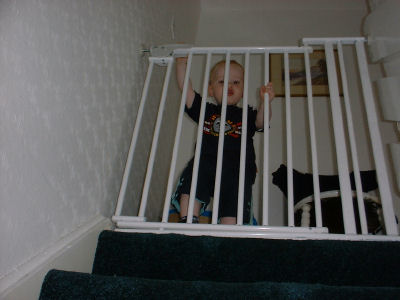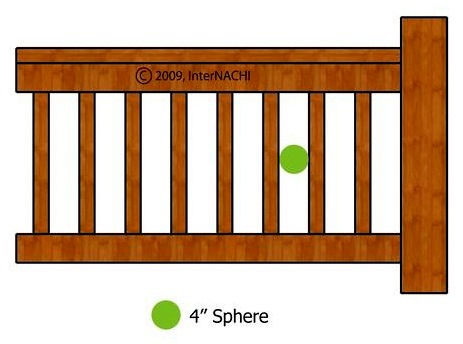Falls are the number one cause of accidents in children under the age of nineteen. Approximately 8,000 children visit emergency rooms each day to be treated for injuries that were caused by a fall. Many of these injuries may have been prevented through taking measures to childproof the home.
Every fall is different, with the most frightening tending to be one that occurs from a substantial height. It is not uncommon to see a child take what we would consider a serious tumble and then get right back up as if nothing happened. The reaction will certainly not be the same should the child fall down stairs or out of a window. The mere thought alone may strike fear in the heart of every parent.
Childproofing Staircases
 Safety gates are a popular choice. These can be used to prevent children from climbing up stairs, or falling down stairs. Safety gates do need to be installed correctly in order to do their job. They should also be of a high quality, made from strong materials.
Safety gates are a popular choice. These can be used to prevent children from climbing up stairs, or falling down stairs. Safety gates do need to be installed correctly in order to do their job. They should also be of a high quality, made from strong materials.Pressure mounted gates are held in place by placing pressure against wall or door surfaces. These are a fine choice for keeping children in certain rooms, but should not be used to prevent the child from falling down stairs. If enough weight or pressure is applied to the gate, it could easily collapse, allowing the child to fall.
Hardware mounted gates are the better choice for staircases. These are held tightly in place with screws, but can be removed once you no longer have the need for a safety gate. Consider mounting these gates at both the top and bottom of the staircase.
Look for the "ASTM" label when shopping for safety gates. The label shows that the gate was created to meet specific standards and is considered safe for use. It also says that the construction of the gate itself will pose no known hardards to the child.

Railings
Handrail baulster spacing can be a concern. Balustrades should never be more than four inches apart. Any that exceed this width will need to be repaired in order to be safe for children. Should they not be changed, children may become stuck. Additionally, handrail height should never be less than 34" or taller than 38". Should a home inspector note that the handrail does not meet standards, you will be notified.
Childproofing Your Windows
Windows can be even more dangerous than staircases. Window related falls account for approximately 4,000 injuries to children each year. Since 1990, over 100 deaths have been reported. Addressing common problems will minimize risks.

Preventing the child from being able to reach the window should be the first step. This can be done by making sure that no funiture is near the window. Large toys that can be climbed on should also be removed from the space near windows.
Once children reach a certain height they will be able to access the window regardless of what is near it. Safety latches can be used to prevent the child from being able to open the window without the help of an adult. Window stops can be used at times that you wish to allow fresh air into the room. These will only allow the window to be lifted to a height of 4 inches.
Window guards or bars can also be used. These may not be the most attractive option, but they work well to deter children from even trying to open windows or climb out. Regardless of the method you choose, teach children not to play with windows at any time. Additionally, screens, even latching types should not be considered a reliable safety method.
Childproofing safety products tend to be relatively inexpensive, and when used properly are quite effective. Minimizing injury risks can be accomplished by addressing all known safety issues in your home. Should you need advice on different childproofing methods, contact a home inspector.


